This year’s most endangered buildings list has been announced by Preservation Chicago featuring influential structures across the city. In its 21st year, the list covers multiple buildings that are at risk for demolition which have contributed to the city’s architectural and cultural legacy. Some entries may appear on the list multiple years, last year’s list can be found here.

The Century and Consumers Buildings via Preservation Chicago
The Century and Consumers Buildings – The Loop
The two-building complex is the only repeat on this year’s list from 2022’s located at 202 and 220 S State Street, with the Century Building going up in 1915 from architects Holabird & Roche and the Consumers Building in 1913 by Jenney, Mundie & Jensen. The terra-cotta clad steel-frame structures are some of the earliest skyscrapers and contribute to the history around the proposed UNESCO Early Chicago Skyscrapers world heritage site.

The Century and Consumers Buildings via Preservation Chicago
However due to their adjacency to the federal courthouse building to the rear the federal government has set aside $52 million to demolish them, as any potential project could not utilize the west-facing windows. However there is one proposal which is being ignored to turn them into a collaborative archives center closing up the windows in question, if demolished the government plans to turn the site into a fenced-off security zone with perimeter landscaping. A Change.org petition has been set up to save the structures found here. Due to a recent demolition permit for the small building connecting the two, efforts to landmark them have been revived this week.

Werner Brothers Storage Building via Preservation Chicago
Werner Brothers Storage Building – Rogers Park
Designed by George S Kingsley in 1921, the six-story facility at 7613 N Paulina Street was known as Chicago’s most beautiful warehouse when it opened. Its front facade features ornate monochromatic glazed terra-cotta detailing in a renaissance-revival style, with fanciful cornice and window frames. However plans were announced last year to demolish the structure for an affordable housing project, though Preservation Chicago recommends incorporating the building into the proposal which would also grant them tax credits.
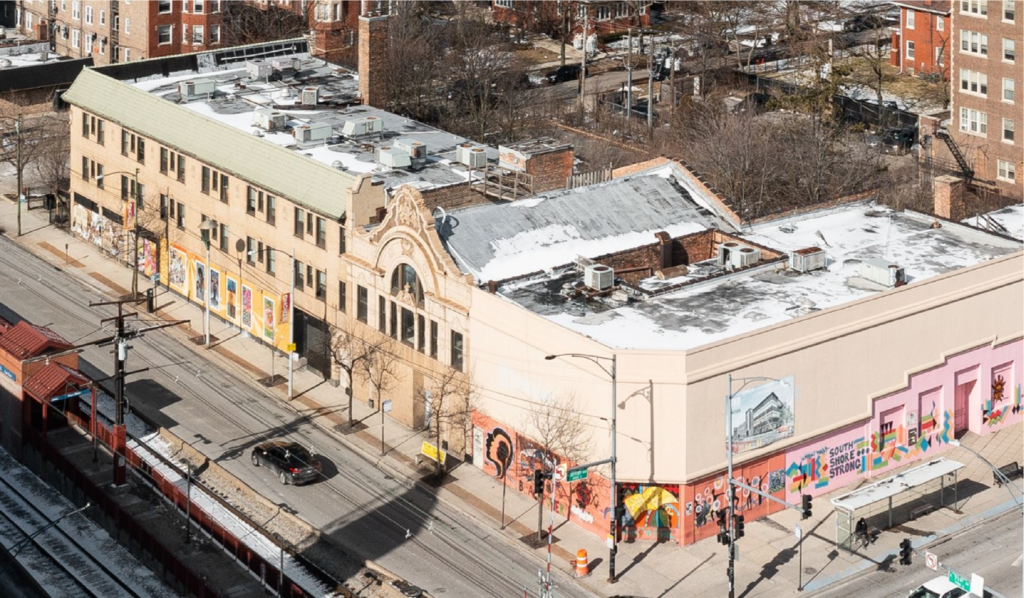
The Jeffery Theater Building & Spencer Arms Hotel via Preservation Chicago
Jeffery Theater Building & Spencer Arms Hotel – South Shore
The Prairie-style structure at 7054 S Jeffery Boulevard was built in 1924 and designed by William P Doerr to be an anchor of the neighborhood. Closed in 1976, its ornate glazed facade and green roof tiles have sat vacant with the main auditorium demolished in the 1980’s for a drive-thru bank. Now the whole complex is in jeopardy as demolition permits were applied for in 2020 with plans to replace them with a new entertainment complex, though no updates have been given on that.
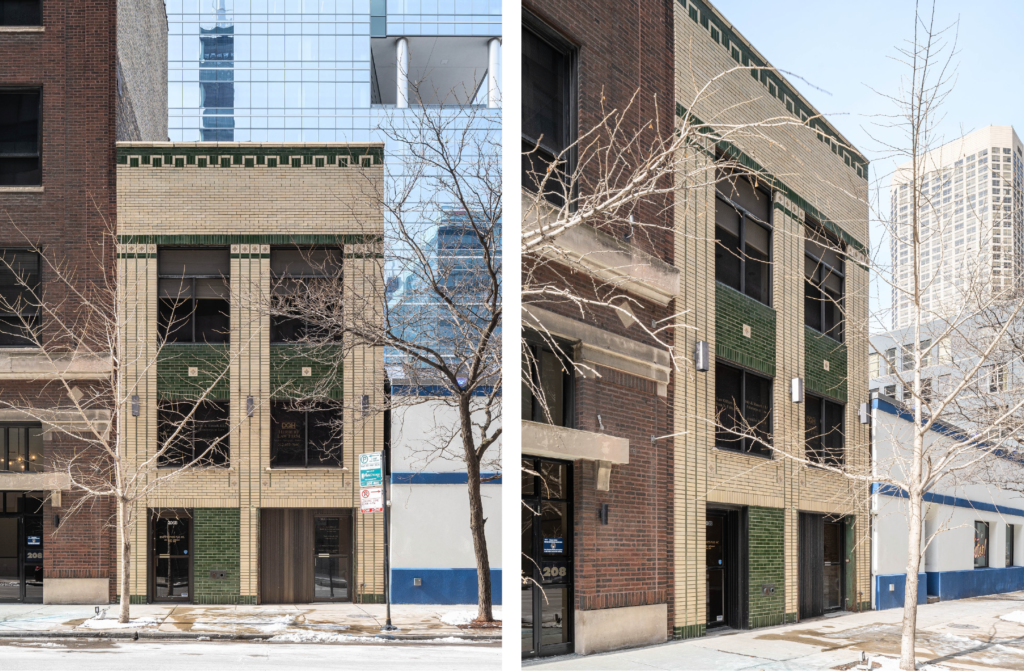
The Warehouse via Preservation Chicago
The Warehouse – West Loop
The vernacular style building at 206 S Jefferson Street went up in 1906 with a cream and green glazed-brick facade. Though rather unassuming, in 1975 nightlife organizer Robert Williams purchased the warehouse and turned it into a three-level nightclub, first frequented by gay Black men before becoming popular to the greater Chicago audience. One of the main reasons for its popularity was due to DJ Frankie Knuckles who pioneered House Music due to the warehouse name. A Change.org petition has also been started to save the structure found here. Due to is cultural significance, initial discussion on granting a landmark status have begun.

Southwest Side Industrial Buildings via Preservation Chicago
Southwest Side Industrial Buildings – McKinley Park & Pilsen
Consisting of three buildings including the Continental Can Company Building at 3815 S Ashland Avenue in the Central Manufacturing District, The Damen Silos at 2860 S Damen Avenue in McKinley Park, and the Fisk Power Station at 1111 W Cermak Road in Pilsen:
The Continental Can Company Building was built in 1920 and designed by Samuel Scott Joy with a large focal tower clad in Gothic terra-cotta detailing. Part of the Central Manufacturing District which is known as the nation’s first modern planned industrial district, the now vacant site had a plan brought forward in 2022 to demolish it for a cold-storage facility.
The Damen Silos were built in 1906 by the Topeka & Santa Fe Railroad on a 23.4-acre site featuring 35 storage silos with the capacity for one million bushels of grain. The site contributed towards Chicago’s domination of the grain world before closing in 1977 due to an explosion, sitting vacant as a canvas for street-artists since then. Now a plan to demolish them for other industrial uses including the storage of 100 trucks.
The Fisk Power Station sits on the edge of the Chicago River in Pilsen built in 1903 and created the world’s largest coal-fired electrical generators, with the systems created here becoming the norm around the world. The multi-structure 50-acre site features Renaissance-revival details important to the city’s industrial past; currently no plans are on the table for the complex.
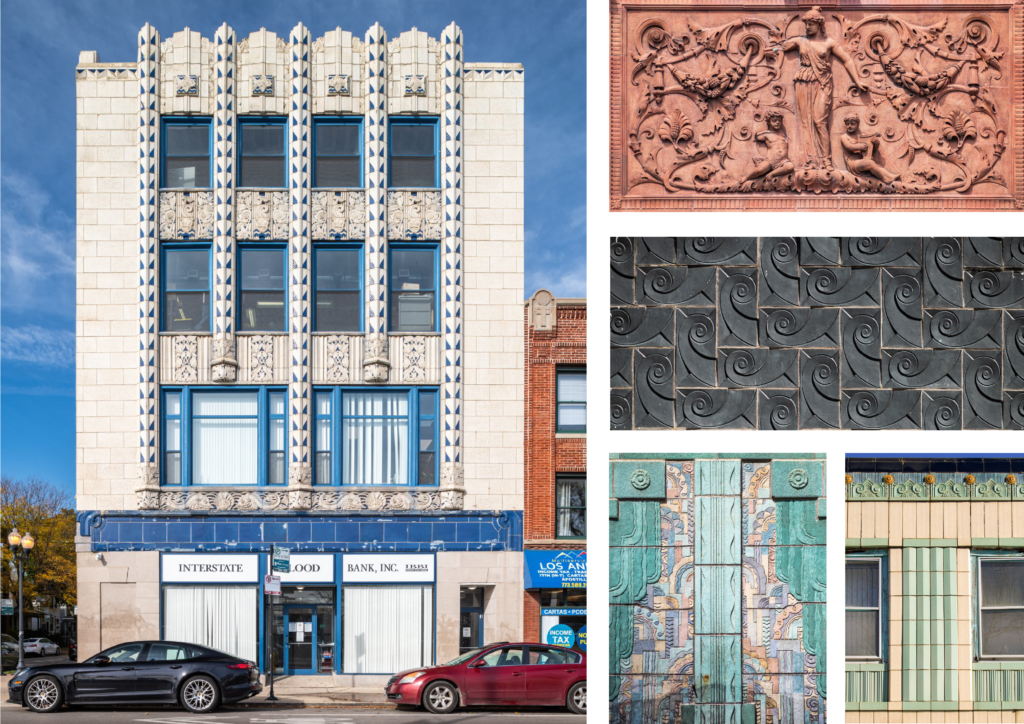
Terra Cotta Buildings via Preservation Chicago
Terra Cotta Buildings Throughout Chicago
Built by various architects between the 1890’s to 1940’s ranging from small structures to high-rises, the style grew in popularity post Chicago Fire of 1871 due to its inexpensive and fire-proof nature. Chicago became one of the nation’s centers for the material with multiple buildings on this list featuring the material. Though this nomination doesn’t state specific structures, the style is scattered across the city but is facing the increasing demolition pressure as few are actually landmarked.
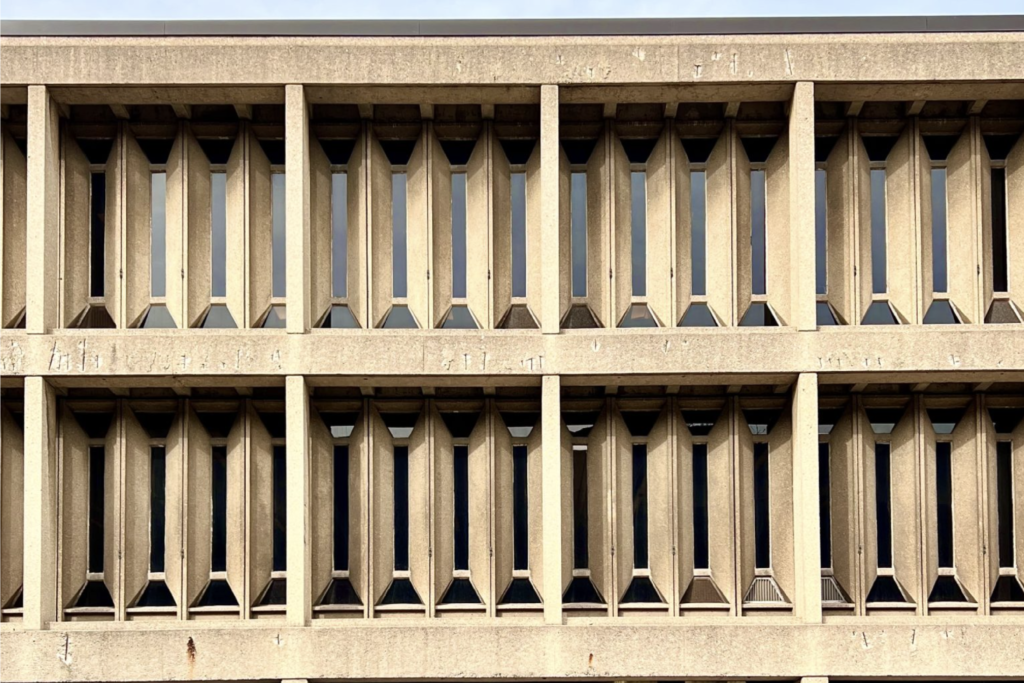
Taft Hall via Preservation Chicago
Taft Hall – UIC
Located at 826 S Halsted Street and built in 1965, the Walter Netsch-designed structure was a part of the visionary original UIC campus though many of its main features were demolished due to their inefficiency. The Brutalist facade features long bands of concrete grills with a field of thin windows piercing through and is part of three identical buildings, however in 2022 the university announced plans to re-skin the hall completely with a new glass facade.
Subscribe to YIMBY’s daily e-mail
Follow YIMBYgram for real-time photo updates
Like YIMBY on Facebook
Follow YIMBY’s Twitter for the latest in YIMBYnews

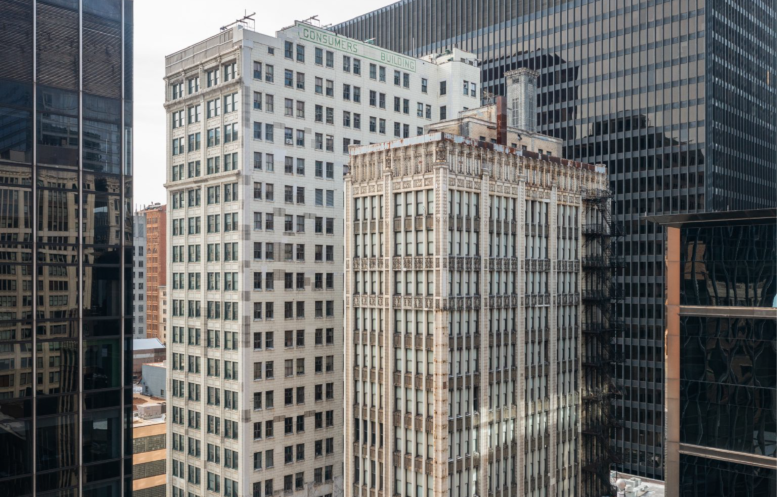
save them all except for Netsch’s UICC buildings….I spent a year in one of those classroom buildings. It felt like a bleak prison punishment somewhere in Siberia. There was nothing inspiring about the experience of learning in those classrooms.
I agree. Especially the first 2.
Totally agree. The Netsch structures are significant only in their total failure architecturally (especially given what was razed to build them).
I hate the preservationist mindset that even historic abominations must be saved. The worst part is that by including garbage buildings on the list, the credibility of the entire exercise is diminished.
I disagree. I spent 4 years at Circle Campus, when it was intact, and I liked the urban, modernist (mid-1970s) feeling. Didn’t expect ivy-covered buildings.
How could Chicago allow for the destruction of the Century and Consumers buildings? Only to be replaced with surban style monstrosity of a “park.” Why have they not considered bricking up the windows facing the courthouse to “protect” the judges who are probably all working from home anyway. What a disgrace!
Unfortunately, its not really the City’s decision. The buildings are federal property — taken under eminent domain by the way. We need to be inundating our reps and senators with demands that these buildings be preserved.
The logic for tearing down the two vintage skyscrapers makes absolutely no sense. The courthouse will still be in clear and direct view of multiple other tall buildings. If they are really worried about security, they have to move the courthouse out of the loop.
There’s a Commission on Chicago Landmarks meeting this Thursday at 12:45pm CT discussing the Preliminary Landmark Status for the C&C buildings. Please attend and/or email ccl@cityofchicago.org with your commentary/questions!
Here’s a wild suggestion… Just cover up the windows within the courthouses themselves. Are floor to ceiling windows an integral part of criminal justice proceedings? (Of course not… how many other courtrooms even have windows at all?)
There’s a Commission on Chicago Landmarks meeting this Thursday at 12:45pm to discuss the C&C buildings’ preliminary landmark status. YIMBY won’t let me include the link but it’s on the CCL site.
Don’t tear down the state street towers!!!! They could easily be converted into affordable senior or student housing!!
The Century and Consumers Buildings must not be torn down we must protest and protect theses buildings its a historic building Imagine if the Al Capone building was not torn down in downtown
Tomorrow is a new day.